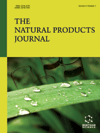
Full text loading...
Melasma, a chronic skin disorder characterized by hyperpigmentation, poses significant challenges in dermatological and cosmetic care. Nanotechnology offers transformative solutions by enhancing the delivery and efficacy of hypopigmenting agents through advanced drug delivery systems, including liposomes, nanoemulsions, solid lipid nanoparticles, and polymeric nanoparticles. These nanocarriers improve the stability, solubility, and skin penetration of active compounds, effectively targeting melanin synthesis pathways. Tailored approaches enable treatments to address specific melasma types, with lipid-based carriers optimized for epidermal melasma and deeper-penetrating systems like transfersomes and ethosomes suitable for dermal and mixed variants. Additionally, gold nanoparticles (AuNPs) introduce novel therapeutic potential with their tyrosinase-inhibiting and antioxidant properties. While formulation advancements have shown promise in optimizing nanocarrier distribution and drug delivery efficiency, challenges such as scalability, cost, and regulatory barriers remain. Initial studies highlight the potential of nanocarrier-based therapies, but robust in vivo trials are essential to validate safety and clinical efficacy. The integration of nanotechnology into melasma treatment represents a paradigm shift, offering innovative, patient-centered solutions that address the limitations of conventional therapies and pave the way for more effective and targeted management strategies.

Article metrics loading...

Full text loading...
References


Data & Media loading...

